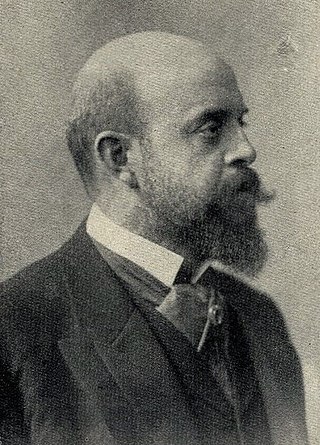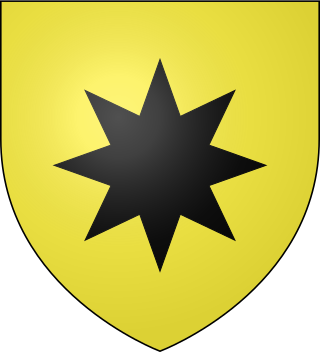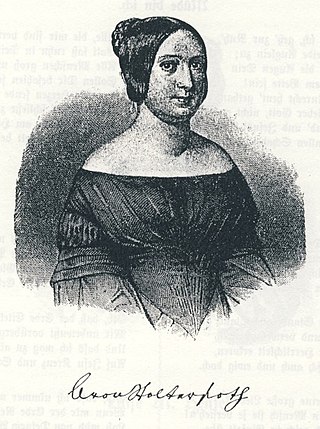
August Bodo Wilhelm Clemens Paul von Trott zu Solz was a German politician.

Sayn-Wittgenstein-Hachenburg was a German County located in Rhineland-Palatinate, near the river Sieg.
John I of Isenburg-Braunsberg was the Count of Isenburg-Braunsberg from 1278 until 1327.
The Countship of Isenburg-Limburg was a state of the Holy Roman Empire in the 13th and 14th centuries, based around the city of Limburg an der Lahn in modern Hesse, Germany.
Gerlach IV of Isenburg-Limburg, also known as Gerlach I of Limburg, was from 1258 Count of (Isenburg-)Limburg, ruling over the town of Limburg an der Lahn and some villages in its hinterlands. He was the founder of the short-lived House of Limburg.
The Herborn Academy was a Calvinist institution of higher learning in Herborn from 1584 to 1817. The Academy was a centre of encyclopaedic Ramism and the birthplace of both covenant theology and pansophism. Its faculty of theology continues as the Theological Seminary of the Evangelical Church of Hesse and Nassau. The institution held the principle that every theory has to be functional in practical use, therefore it has to be didactic.

Henry I of Nassau-Siegen, German: Heinrich I. von Nassau-Siegen was Count of Nassau-Siegen, a part of the County of Nassau, and ancestor of the House of Nassau-Siegen. He comes from the Ottonian branch of the House of Nassau.

Countess Magdalene of Waldeck-Wildungen, German: Magdalena Gräfin zu Waldeck-Wildungen, was a countess from the House of Waldeck and through marriage successively Countess of Hanau-Münzenberg and Countess of Nassau-Siegen.

Georg Christian Carl Boos, also Karl Boos, was a German architect and court architect.

Albert of Hanau-Münzenberg was the younger son of Philip Louis I of Hanau-Münzenberg (1553-1580) and his wife, Countess Magdalene of Waldeck-Wildungen (1558-1599). The only sons of his parents to reach adulthood were Albert and his elder brother Philip Louis II. Albert's son John Ernest was the last male member of the Hanau-Münzenberg line of the House of Hanau.

Philip III of Falkenstein, Lord of Falkenstein, Münzenberg and Lich, Hesse was a member of the Lich line of the Falkenstein dynasty, son of Werner I of Falkenstein, Lord of Münzenberg and Falkenstein, who founded the Lich line, and his wife Mechtild of Diez.

Thelenberg is a hamlet in the municipality of Asbach in the district of Neuwied in the German state of Rhineland-Palatinate. The village has a rural character, but is increasingly developing into a residential area.

The church of St Lubentius in Dietkirchen, now part of Limburg an der Lahn, Hesse, Germany, was the most important church of the region until the 13th century. Located on top of a rock outcrop on the west bank of the river Lahn, it holds relics of St Lubentius, who according to the Gesta Treverorum worked in the area as a missionary in the fourth century. Today, the former collegiate church serves as the Catholic parish church of Dietkirchen, while its former chapel Dreifaltigkeitskapelle is the Protestant parish church. The church is a Romanesque basilica, mostly built in the 11th and 12th centuries, with a double tower at the west end.

Marienstatt Abbey is a Cistercian monastery and a pilgrimage site in Streithausen, Westerwaldkreis, Rhineland-Palatinate, in the Nister valley near Hachenburg.
Gerhard Menk was a German historian and archivist.

Friedrich Uhlhorn was an honorary professor at the Philipps-Universität Marburg, whose scientific focus was on the history of the State of Hesse and was also known for his work outside Hesse. His special scientific interest was mainly focused on the problems of historical cartography. In collaboration with Edmund Ernst Stengel, he published the Geschichtlichen Atlas von Hessen, which is considered his major work. He also wrote the article Die deutschen Territorien. A: The West, which deals with the West German regional history. Likewise he was responsible as editor for the Hessisches Jahrbuch für Landesgeschichte by Bruno Gebhardt.

Adelheid Karoline Wilhelmine Julie von Stolterfoth was a German poet.
Kurt Köster, also spelled Koetser, was a German librarian and historian.

Ferdinand Maximilian III of Ysenburg-Wächtersbach was the head of the Wächtersbach branch of the House of Ysenburg and the first Prince of Isenburg-Budingen-Wächtersbach.
Wolf-Heino Struck was a German historian and archivist. He was director of the Hessian Central State Archives in Wiesbaden. He earned acclaim for his research of the history of the Lahn region.












